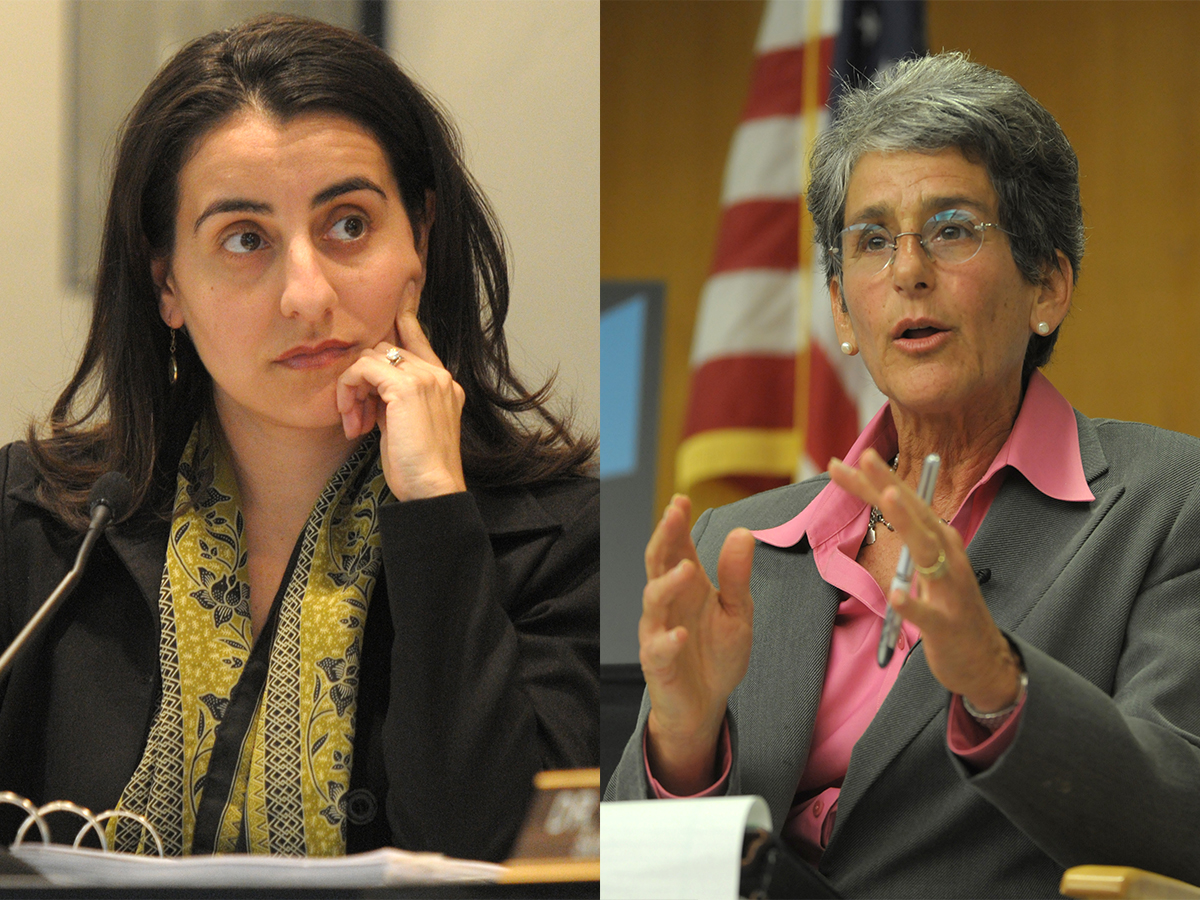Jackson, Limón on Opposite Sides of Cap-and-Trade Vote
Governor Gets Landmark Emissions Bill Passed

Governor Jerry Brown pulled off what may be the ultimate trick of his storied political career this week, extending for another 10 years the lifespan of California’s cap-and-trade program by wheeling, dealing, and browbeating into submission both houses and both parties of California’s reluctant Legislature.
But when the dust settled on Monday’s historic vote, Santa Barbara’s statehouse representatives — both liberal, progressive, environment-minded Democrats — found themselves on opposite sides. State Senator Hannah-Beth Jackson, now entering her 11th year in office, voted in favor of the governor’s package; Assemblymember Monique Limón, now approaching her seventh month in office, voted against.
Both support cap-and-trade as a general approach to reducing greenhouse-gas emissions; both expressed serious misgivings with the bill. “I had to ask myself, is this bill better than nothing at all,” explained Jackson. “And the answer was yes. We can’t let our current plan just expire, which it would in two years if we didn’t do anything.” For Jackson, President Donald Trump’s decision to withdraw from the Paris Accord earlier this year gave Monday’s vote a sense of great global urgency. “The world is watching us,” she said. “What is California going to do? Our leadership on climate change is more important than ever.”
Limón likewise stressed the need to reduce greenhouse-gas emissions, but she said the compromises needed to garner the two-thirds supermajority were too much for her to abide. Under the new bill, she said, local air-quality-control districts would be preempted by the state from adopting greenhouse-gas controls of their own. She also objected to the large quantity of air pollution “allowances” for oil and utility companies. “The very entities that are causing the greatest problems are getting the biggest breaks,” she said.
In Santa Barbara, the air-quality-control district does not regulate greenhouse gases at all, but the county supervisors adopted the lowest threshold for carbon dioxide emissions in the state two years ago. Currently, there are three major onshore oil projects that, combined, would generate 650,000 metric tons of greenhouse gases a year. The county requires mitigations for anything over 1,000 metric tons.
The cap-and-trade package is in reality three bills balled into one complex Rubik’s cube. One bill allows polluters to buy and sell pollution offset credits, the proceeds of which will be used to underwrite the vast costs of Governor Brown’s high-speed-rail project. That focuses exclusively on carbon dioxide emissions. Another bill mandates the creation of a greatly augmented air-quality-monitoring network throughout the state to track levels of all pollutants and airborne toxins other than carbon dioxide.
The deadline for creating this new network is “extremely aggressive,” said Aeron Arlin Genet, director of Santa Barbara’s Air Pollution Control District, and the technology required exceptionally expensive. Just two sensors for certain airborne particulates can cost $300,000 a year, she said. The costs required, she said, will vastly exceed the ability of air-pollution districts to erate money. Where will the funds come from? And even assuming the monitoring happens, new air-quality standards, action levels, and enforcement protocols have yet to be hammered out. As a result, a consortium of 35 California air-pollution-control districts — including Santa Barbara’s — officially opposed Brown’s legislative package.
Limón echoed many of these same concerns. “I keep asking, where’s the evidence we can do all the things they say we can do?” she stated. “Where are the resources for implementing, monitoring, and enforcing the new legislation?”
The split between Jackson and Limón on Brown’s cap-and-trade package mirrors a broader division within California’s environmental community. Groups such as the Sierra Club, Food and Water Watch, and 350.org have blistered Brown for making backroom deals with the oil companies. Other organizations, such as the California League of Conservation Voters, Union of Concerned Scientists, and the Natural Resources Defense Council Action Fund, have backed it. So, too, have the Chamber of Commerce, major agricultural organizations, and former Republican governors Pete Wilson and Arnold Schwarzenegger. Brown threw in tax breaks worth up to $350 million for manufacturing industries as well. And at the last minute, he added a special constitutional amendment that requires a two-thirds supermajority vote on how the funds generated by selling pollution credits can be spent.
For Jackson — who remembers well the past horrors of such two-thirds requirements in passing budgets — that was an especially hard compromise to swallow. “We didn’t get everything I wanted out of this bill. I, for one, would have liked to put more knee in the oil industry’s back,” she said. “But it’s a really important bill. And we continue to be in the lead.”
Limón said she had conversations with the Assembly Speaker and his staff. She went to meetings with Governor Brown and has had conversations with his staff. “There was pressure on all of us. We all want the same thing, but in the end I couldn’t put my name on this bill. It was a matter of policy and principle. It was not easy, but my vote, I think, reflected the district.”



